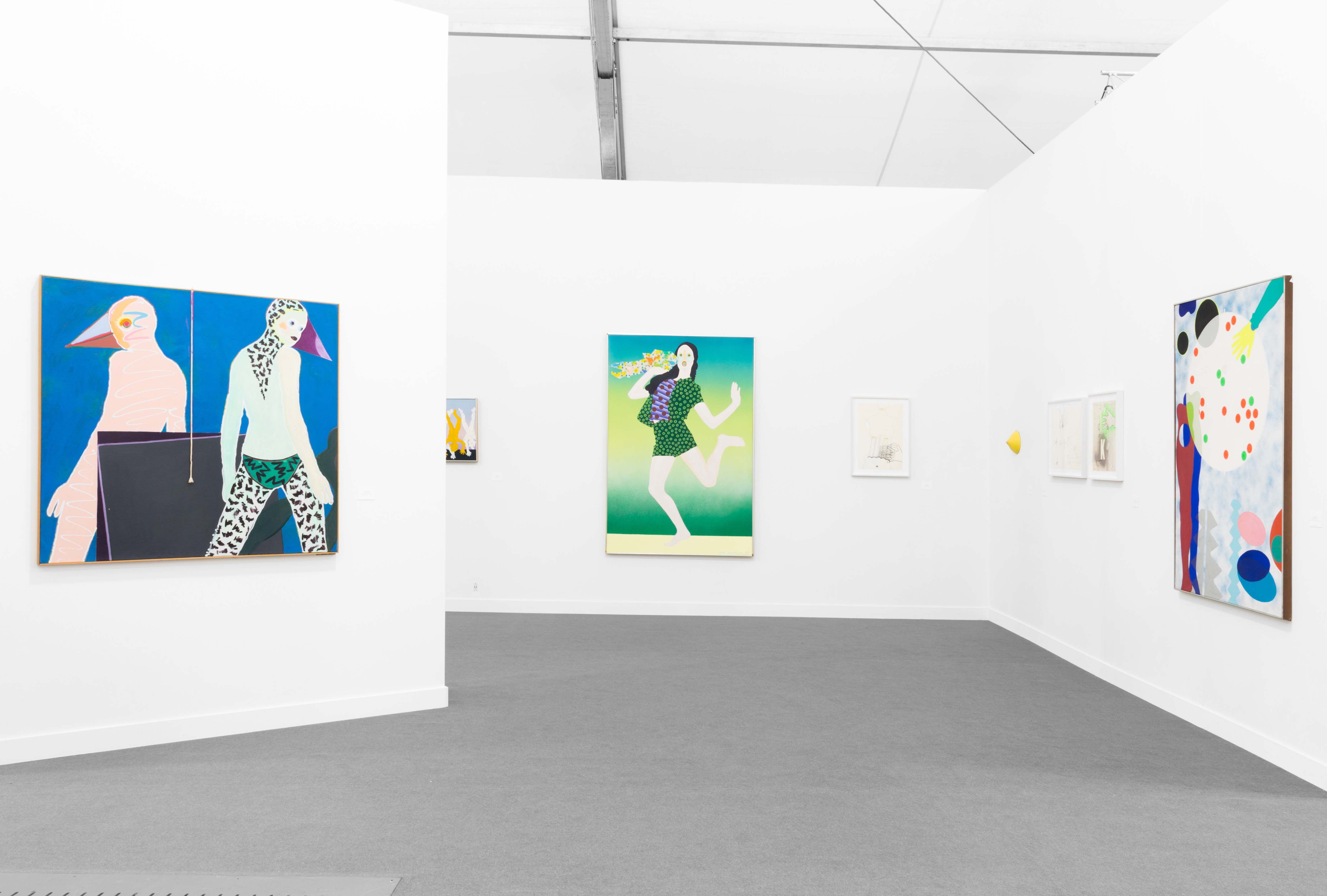We are very proud to present a booth with Kiki Kogelnik at Frieze New York from May 4-7, 2017.
What’s a Robot Going to Do with Two Left Hands? by Sam Korman
It’s impossible not to take joy in the video footage of Stephen Hawking during a zero gravity flight. In one clip, several scientists spin him around like a rag doll. A moment later, an apple floats by, presumably to pay respect to Isaac Newton, though it permeates the scene with a combination of schadenfreude and pathos, as it bounces off the defenseless hawking.
The brief video recalls an early painting by Kiki Kogelnik, Hand in Outer Space (c. 1964). An outstretched hand, along with a pair of mismatched legs, floats around with space junk; a subtle, compositional turbulence imbues the limbs with a disjointed objecthood. Hawking represents our current technological paradigm, and the video symbolizes the suspension of gravity enabled by our digital age. Kogelnik was extremely sensitive to technology’s many in influences, and her sci-fi narratives are particularly resonant in our machine- and device-saturated world. Her explorations into body and gender — found in technology’s utopian promise — is a perfect foil for fierce, prescient satire.
Kogelnik understood Pop as an a affective style, a means of inserting the body into the world of signs. In some cases, Pop allowed her to be explicit about her politics. War (1970) is a salient Vietnam War protest: a humanoid silhouette raises its arms as if to address a field strewn with skeletons and severed body parts. Many of her drawings depict robots and avatars, crash test dummies used to test the body’s tolerance to cultural stresses. Untitled (figure) (1965) is an idiosyncratic schematic that retrofits a torso with a smattering of human and mechanical parts. Though it’s not clear what this comically fragmented contraption is capable of, it has resulted in a poetic sense of futility: what’s it going to do with two left hands?
It’s this scrappy immediacy, amongst other things, that has sustained Kogelnik’s relevance today: her capacity to see Pop’s ability to transform pleasure into a complex and visceral polemic. This Promethean quality dovetails well with fashion, a field that also treats the body like a text. Kogelnik’s paintings from the 1970s and 80s appropriate and dissect fashion photography tropes. We might luxuriate over the details of Taped (1972), which appears like a mock up for a dystopian magazine ad. The model’s fluorescent makeup or the pussy willow pattern on her shirt are lavish and lush, but these details only ensure that the strips of masking tape over her eyes and mouth more violently undermine her captivating pose. Fabrics are more animate than the models in Express (1972) and Double Vision (1981). against a melee of polka dots, orals, stripes, and ombrés in the former, and fierce zigzag patterns in the latter, the models’ facial expressions are as evocative as a Soviet automaton—rather than emotion, their faces merely convey an almost human kind of effort.
Kogelnik disassembles the body and redistributes it along different axes of desires. Untitled (breast) (1968) presents a single, sickly yellow breast dangling from a hook. Its formal elegance might distract us from its matter of factness; its nipple might make it look like an overturned serving bowl. Satire undergirds much of what Kogelnik produced throughout her career, and her art’s sustained relevance has occurred because the body continues to be an embattled site. But her work also retains its urgency through its ability to metabolize its political moment, and convert it into an aggressive, unabashed visual titillation. For Kogelnik, pleasure is political. If jouissance can’t start the revolution, it will certainly lead us there.


















